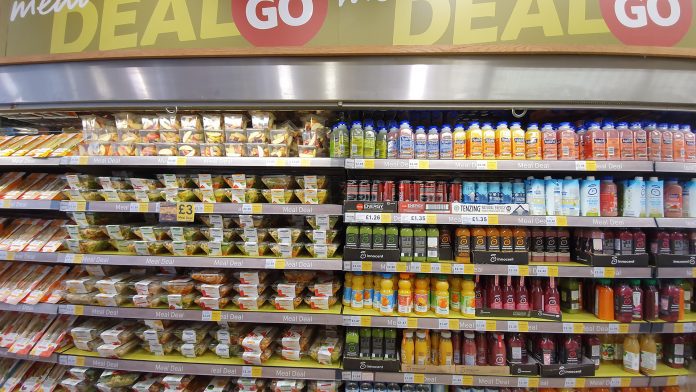
Researchers from the University of Birmingham have found that 23% of different lunch meal deals exceeded calorie guidelines.
Most supermarkets and high street stores offer famous lunch meal deals, which include a main, snack and drink. However, many of these deals exceed the 600-calorie recommendation for lunch as per government guidelines.
To generate awareness of calories, the UK Government launched the ‘One You’ campaign in 2016 to tackle obesity and improve knowledge surrounding health and diet. A key message from this campaign was the 400-600-600 guidance – 400 calories for breakfast and 600 for lunch and dinner, with two 200-calorie snacks.
The study can be found in the Journal of Marketing Management.
Can lunch meal deals be healthy?
The study looked at five national supermarkets and high street stores that offer lunch meal deals. The researchers found that triple sandwiches, which have an average of 657 calories and baguettes, which have an average of 528 calories, are the worst offenders. The worst snacks in the meal deal were crisps and chocolate bars. Smoothies and energy drinks also had the highest number of calories.
This analysis shows that, for working people on the go, limiting lunch to 600 calories can be difficult when many options exceed this.
Dr Sheena Leek, senior lecturer in marketing at the University of Birmingham who led the study, said: “For many people who work shifts, or your average nine to five, finding time to prep lunch can be difficult, especially for those with childcare responsibilities. For this reason, the meal deal, offered in shops and supermarkets all over the country, is a quick, easy, and economical option.
“However, our research has shown that many of these meal deal combinations are well exceeding the suggested government calorie limit for lunches, and in some cases taking up over half recommended daily allowance for a female adult. Most people won’t be aware of how many calories are in their lunch when they only have 30 minutes or so to grab something to eat and get back to the office or on the road.”
Dr Leek continued: “The government has long spoken about combatting obesity and needing people to eat healthier, exercise more and for the nation to ‘slim down’ to combat weight-related health issues, which may require NHS resources later in life. However, if one of the most common and attractive lunch options for working people is regularly breaking government guidance, achieving this aim is going to be incredibly hard.”
Encouraging retailers to promote healthy meal deals
The researchers suggest that to ensure lunch meal deals are in-line with the 600-calorie guidance, the government could encourage retailers to use the meal deal promotion for combinations that meet the limit, making it easier for consumers to choose a healthy option. They also suggest that the government could make this a legal requirement, but this would be restrictive for retailers.
Dr Leek concludes: “Companies could take some quick and easy steps to reduce the calories in their meal deals, such as removing the worst offending products from the offer, reformulating recipes, or resizing products. The government could also take steps to address this issue either through renewed guidance and collaboration with shops or through legislation.
“Currently, and ultimately, it is up to the individual to decide what to buy for their lunch. But if the most attractively priced options are the unhealthiest, does that really make it a fair choice?”

























